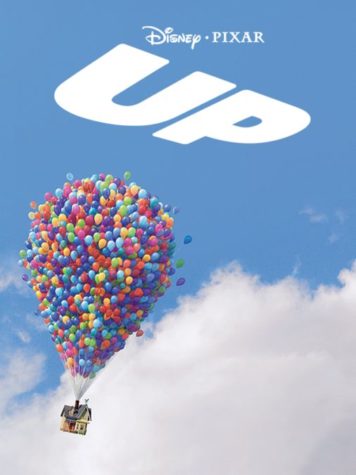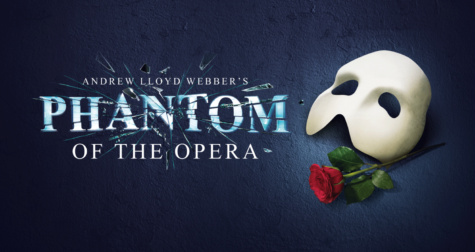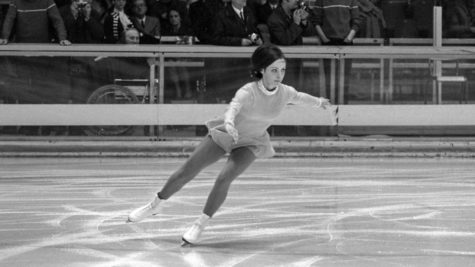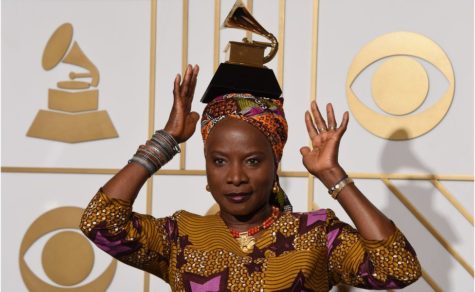Mercyhurst Dance Goes Remote
April 16, 2020
When Mercyhurst University made the decision to transition to remote learning, many students and faculty across the disciplines started asking an important question: what is the Dance Department going to go?
Dance students and faculty were asking the same. Is it possible to teach a technique class that belongs in a studio and uses tactile teaching methods through a computer?
Jennifer McNamara, assistant professor of Dance, shared her initial reaction to the news. “There were the thoughts of what would happen to Raw Edges, and if or how we would do juried finals – logistical things that are small in the big picture, but huge in our little world.”
Juried finals are how dance technique classes administer final exams. Each class learns a movement phrase that must be performed in front of a panel of the entire dance faculty. Students are graded on factors such as memory of sequence, performance quality, technical execution and musicality.
Solveig Santillano, associate professor of Dance, expressed a similar array of feelings. “My first reaction was dread – I hoped to first avoid, second postpone and third to get through as much programming as possible.”
In the madness, however, Santillano “strove to create calm, find stability in all the mobility, offer grounding and support.”
Currently, the Mercyhurst Dance department is holding technique classes live through Teams, with professors and students finding space wherever they can.
Santillano described the chaos occurring in her home. She and her husband, Mark Santillano, also a faculty member, spent days shifting furniture to create studio space. “We created a sunroom porch studio,” she said “and converted our living room into the much needed second dance studio.”
Hannah Burneka, junior double major in Dance and Psychology, takes her technique classes in her living room or yard. She has used chairs, counters, and even hammock stands as a barre.
“There’s only so much you can do safely inside on carpet in a cramped area or on cement outside, so it’s difficult to do everything we would normally.”
Danielle Quenneville, Mercyhurst senior Dance major, takes her technique classes in her bedroom, or outside if it’s a nice day.
As a senior she has a unique experience, namely that her capstone choreography will no longer be performed. Her capstone was about “pollution caused by clothing production, specifically the dying process, and how we can be more mindful when buying and taking care of our clothes.”
“It has been heartbreaking to not get to work with our fellow peers and create our last work at the Hurst,” Quenneville said.
Mercyhurst is not the only university with a dance program, and thus is not the only one experiencing such chaos.
Gwyneth Fletcher, Sophomore major in Classics with a Dance minor at Swarthmore College, is currently taking Ballet, a Repertoire performance class and Choreography II. She takes her dance classes in her bedroom, where she has a small barre.
“For ballet, we don’t do much more than barre,” she said. “I think it’s especially weird not seeing the other people I’m used to being in class with.”
Laura Gaines, Sophomore Statistics major and Dance minor at The Ohio State University has experienced something slightly different with her dance classes.
“We don’t have live classes, but we have videos with practices we can use whenever we want during the week.”
Even so, she does her exercises in her basement where she too has a portable ballet barre.
As a whole, the dance community is stepping up to help each other stay in shape. Dancers from companies as elite as New York City Ballet (NYCB) and American Ballet Theater (ABT) offer daily free classes that live stream through Instagram.
Mercyhurst dancers went through the “Dirkout,”a workout presented by NYCB principal dancer Ashley Bouder. Mercyhurst Dance students also enjoyed an online master class from Scott Putman of the Elemental Body Alignment System. Both Fletcher and Gaines reported that their schools use similar opportunities.
Despite the trying times, there are more lessons to be learned.
McNamara hopes that “students realize that they are, indeed, socially merciful, globally responsible, compassionately hospitable, intellectually creative and reflectively aware . . . really, this is what the whole pandemic is throwing into such clear relief: what it means to be human.”










